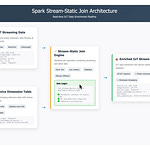Why Liquid Clustering Improves Merge Efficiency
Unlike traditional Z-order clustering, which could end up re-clustering portions of the dataset even when unnecessary, Liquid Clustering is designed to be almost always incremental. It focuses on clustering only the new data that has arrived and hasn’t yet been organized, giving much stronger guarantees against re-clustering existing data. This incremental behaviour makes clustering more predictable and cost-efficient. The payoff shows up during merges: for merges to be efficient, you need to scan the fewest possible files, and that requires data to be sorted or clustered. By clustering/physically storing sorted data, Liquid Clustering ensures better file pruning which helps in faster merges, and lowers overall latency.
Reference
Behind the Scenes: How do deletion vectors actually work (Substack)
Deep dive into the mechanics of deletion vectors: how they mark rows deleted without rewriting whole files.
Use row tracking for Delta tables (Delta Lake Docs) Delta Lake
Explains row tracking: the new metadata fields (
row_id,row_commit_version) that identify and version rows. Delta LakeHow to enable/disable it, and what its limitations are. Delta Lake
Deep Dive: How Row-level Concurrency Works Out of the Box (Databricks Blog) Databricks
Describes what row-level concurrency means, and how it works in the Databricks Runtime. Databricks
Shows how Liquid Clustering + deletion vectors enable out-of-box conflict resolution (e.g. avoiding
ConcurrentAppendException/ConcurrentUpdateException). DatabricksGives examples / internal logic of how concurrent modifications are tracked per row rather than per file or partition. Databricks
merge_and_optimize_parallel_demo_fixed.ipynb (GitHub notebook by “material_for_public_consumption”) GitHub
Demo notebook that shows merges and Optimize operations running in parallel. GitHub
Why Liquid Clustering




